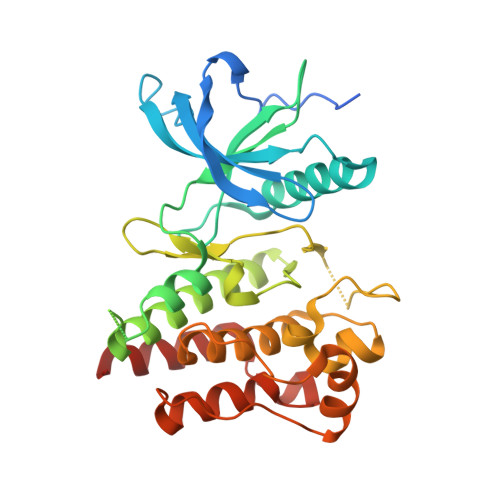Cracking the Molecular Origin of Intrinsic Tyrosine Kinase Activity through Analysis of Pathogenic Gain-of-Function Mutations.
Chen, H., Huang, Z., Dutta, K., Blais, S., Neubert, T.A., Li, X., Cowburn, D., Traaseth, N.J., Mohammadi, M.(2013) Cell Rep 4: 376-384
- PubMed: 23871672
- DOI: https://doi.org/10.1016/j.celrep.2013.06.025
- Primary Citation of Related Structures:
4J95, 4J96, 4J97, 4J98, 4J99 - PubMed Abstract:
The basal (ligand-independent) kinase activity of receptor tyrosine kinases (RTKs) promotes trans-phosphorylation on activation loop tyrosines upon ligand-induced receptor dimerization, thus upregulating intrinsic kinase activity and triggering intracellular signaling. To understand the molecular determinants of intrinsic kinase activity, we used X-ray crystallography and NMR spectroscopy to analyze pathogenic FGF receptor mutants with gradations in gain-of-function activity. These structural analyses revealed a "two-state" dynamic equilibrium model whereby the kinase toggles between an "inhibited," structurally rigid ground state and a more dynamic and heterogeneous active state. The pathogenic mutations have different abilities to shift this equilibrium toward the active state. The increase in the fractional population of FGF receptors in the active state correlates with the degree of gain-of-function activity and clinical severity. Our data demonstrate that the fractional population of RTKs in the active state determines intrinsic kinase activity and underscore how a slight increase in the active population of kinases can have grave consequences for human health.
Organizational Affiliation:
Department of Biochemistry and Molecular Pharmacology, New York University School of Medicine, New York, NY 10016, USA.
















